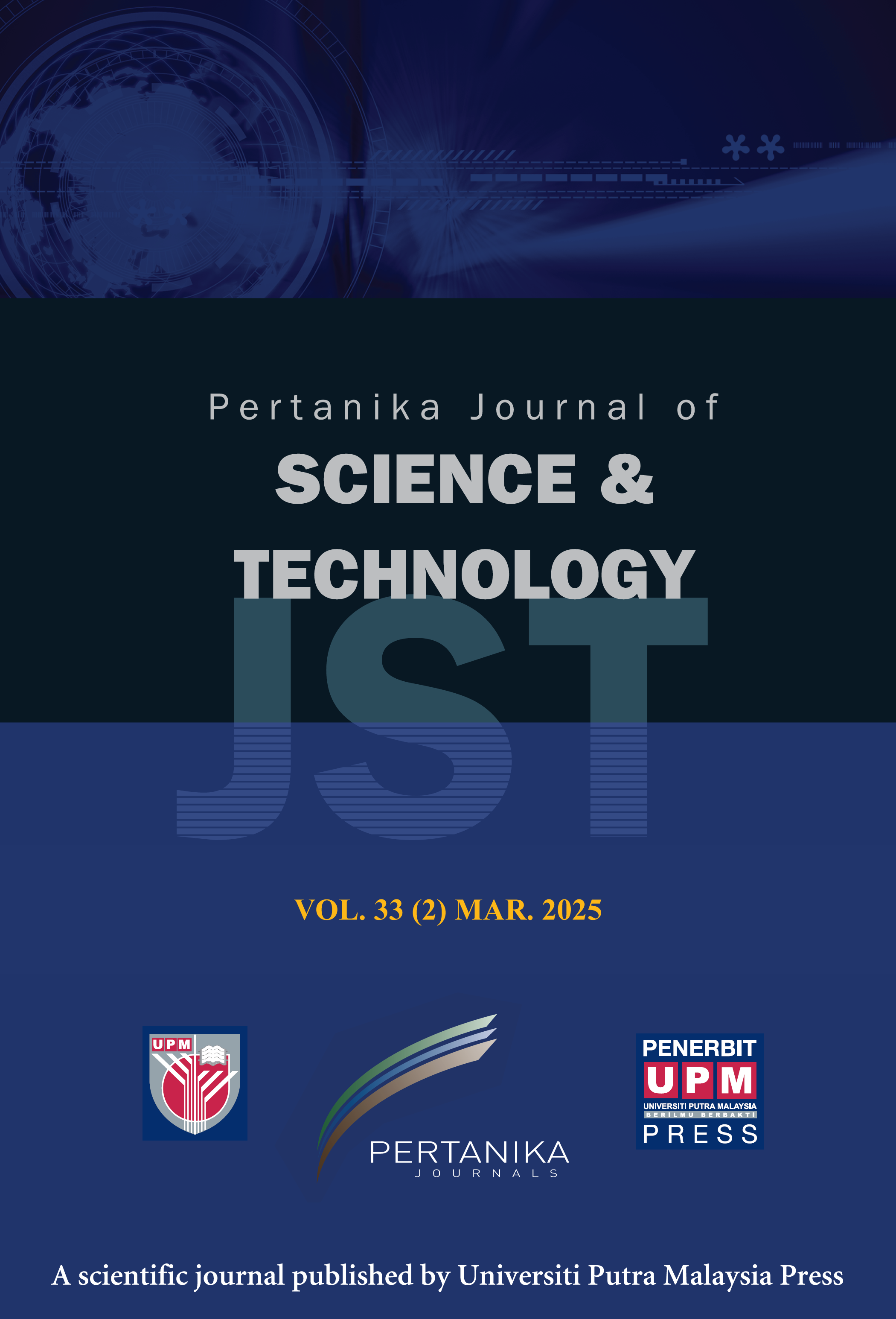PERTANIKA JOURNAL OF SCIENCE AND TECHNOLOGY
e-ISSN 2231-8526
ISSN 0128-7680
J
J
Pertanika Journal of Science & Technology, Volume J, Issue J, January J
Keywords: J
Published on: J
J
-
Ahlstrom, D. (2010). Innovation and growth: How business contributes to society. Academy of management perspectives, 24(3), 11-24. https://doi.org/10.5465/amp.24.3.11
-
Bada, S. O., & Olusegun, S. (2015). Constructivism learning theory: A paradigm for teaching and learning. Journal of Research & Method in Education, 5(6), 66-70. https://doi.org/10.9790/7388-05616670
-
Bottge, B. A., Toland, M. D., Gassaway, L., Butler, M., Choo, S., Griffen, A. K., & Ma, X. (2015). Impact of enhanced anchored instruction in inclusive math classrooms. Exceptional Children, 81(2), 158-175. https://doi.org/10.1177/0014402914551742
-
Bransford, J. D., Sherwood, R. D., Hasselbring, T. S., Kinzer, C. K., & Williams, S. M. (2012). Anchored instruction: Why we need it and how technology can help. In Cognition, education, and multimedia (pp. 129-156). Routledge.
-
Bransford, J. D. (1997). The Jasper Project: Lessons in curriculum, instruction, assessment, and professional development. Psychology Press.
-
Brooks, J. G., & Brooks, M. G. (1999). The case for constructivist classrooms. Association for Supervision and Curriculum Development.
-
Cognition and Technology Group at Vanderbilt. (1990). Anchored instruction and its relationship to situated cognition. Educational Researcher, 19(6), 2-10. https://doi.org/10.3102/0013189X019006002
-
Crews, T. R., Biswas, G., Goldman, S., & Bransford, J. (1997). Anchored interactive learning environments. International Journal of Artificial Intelligence in Education, 8, 142-178.
-
Duncan, G. W., & Bamberry, G. (2010). Anchored instruction: Its potential for teaching introductory management. International Journal of Learning, 17(3), 163-177.
-
Deitz, J. E., & Southam, J. L. (2015). Contemporary business mathematics for colleges, brief course. Cengage Learning.
-
Etheris, A. I., & Tan, S. C. (2004). Computer-supported collaborative problem solving and anchored instruction in a mathematics classroom: An exploratory study. International Journal of Learning Technology, 1(1), 16-39. https://doi.org/10.1504/IJLT.2004.003680
-
Harris, K. R., & Pressley, M. (1991). The nature of cognitive strategy instruction: Interactive strategy construction. Exceptional Children, 57(5), 392-404. https://doi.org/10.1177/001440299105700503
-
Kariuki, M., & Duran, M. (2004). Using anchored instruction to teach preservice teachers to integrate technology in the curriculum. Journal of Technology and Teacher Education, 12(3), 431-445.
-
Kaur, K. (2014). Importance of business mathematics in management system: An overview. International Journal of Management and Social Sciences Research, 3(4), 32-33. http://www.irjcjournals.org/ijmssr/Apr2014/7.pdf
-
Lee, M. (2002). Anchored instruction in a situated problem-solving environment. In EdMedia+ innovate learning (pp. 1102-1107). Association for the Advancement of Computing in Education (AACE).
-
Little, M. E. (2009). Teaching mathematics: Issues and solutions. Teaching Exceptional Children Plus, 6(1), 1. http://scholarship.bc.edu/education/tecplus/vol6/iss1/art1
-
Love, M. S. (2004). Multimodality of learning through anchored instruction. Journal of Adolescent & Adult Literacy, 48(4), 300-310. https://doi.org/10.1598/JAAL.48.4.3
-
Morales, E. E. (2008). The resilient mind: The psychology of academic resilience. The Educational Forum, 72(2), 152-167. Taylor & Francis Group. https://doi.org/10.1080/00131720701805017
-
Nicolaidou, M., & Philippou, G. (2003). Attitudes towards mathematics, self-efficacy and achievement in problem solving. European Research in Mathematics Education III, 1-11.
-
Oliver, R., & McLoughlin, C. (1999). Using web and problem-based learning environments to support the development of key skills. Ascilite, 99, 307-325.
-
Republic Act No. 10533. (2013). https://www.officialgazette.gov.ph/2013/05/15/republic-act-no-10533/
-
Serafino, K., & Cicchelli, T. (2003). Cognitive theories, prior knowledge, and anchored instruction on mathematical problem solving and transfer. Education and Urban Society, 36(1), 79-93. https://doi.org/10.1177/0013124503257016
-
Shyu, H. Y. C. (2000). Using video‐based anchored instruction to enhance learning: Taiwan’s experience. British Journal of Educational Technology, 31(1), 57-69. https://doi.org/10.1111/1467-8535.00135
-
Young, M. F., & Kulikowich, J. M. (1992). Anchored instruction and anchored assessment: An ecological approach to measuring situated learning. Connecticut University Research Foundation.
-
Zydney, J. M., Bathke, A., & Hasselbring, T. S. (2014). Finding the optimal guidance for enhancing anchored instruction. Interactive Learning Environments, 22(5), 668-683. https://doi.org/10.1080/10494820.2012.745436
ISSN 0128-7680
e-ISSN 2231-8526




